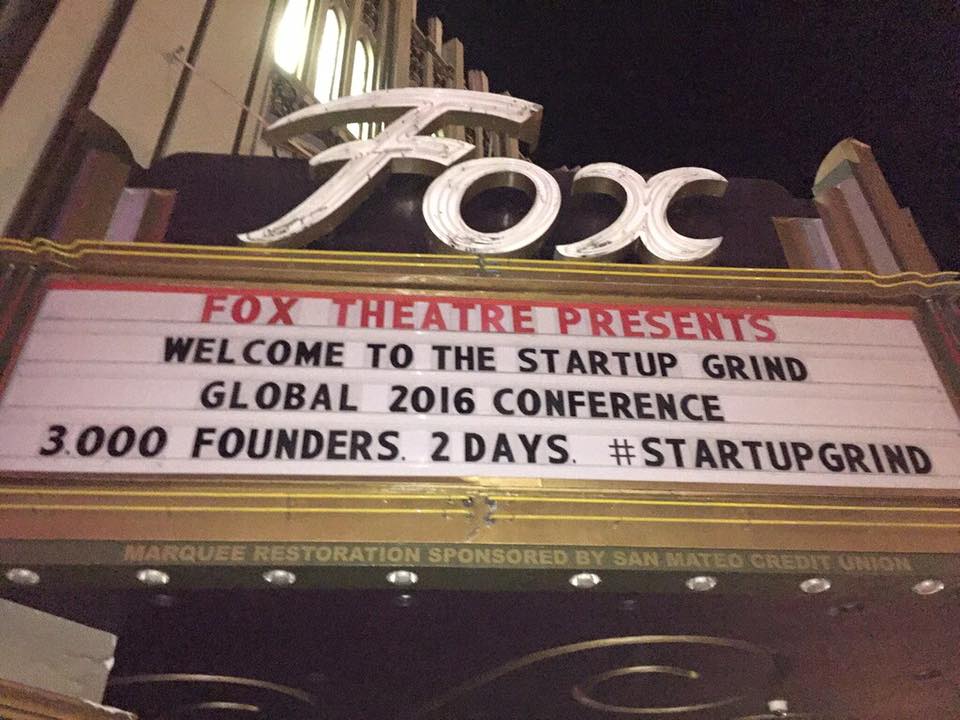During the Global Startup Grind Conference in Redwood City CA, leading investors including Marc Andreeassen, Tim Draper and Vinod Khosla shared insights, success stories and advice with thousands of entrepreneurs. Here are the key highlights from the two days:
- Tide is turning with reduction in valuations and capital
After strong post-recession growth in funding and valuations, ‘the tide is going out’ potentially leaving behind many dying unicorn companies. While many factors are contributing to this tightening of capital, recent post-IPO valuation declines (Zyna, GoPro, Box) are leading to a bleak outlook for exits in 2016, hence a restriction in capital for new investments.
- Revenue trumps investment
While always important, a strong and sustainable revenue stream is now essential for success (or investment). In fact, the act of seeking investment is now considered lack of success. Founders should put their time into acquiring paying customers not investors.
- Monetization of real pain drives success
To drive sustainable, profitable revenue, entrepreneurs (and leaders of all companies) must ensure they are uniquely addressing real customer pain (with severity, frequency and high impact) while delivering quantifiable (monetized) customer value.
- Black-striped unicorns with bootstrap profitability take control
The entrepreneur who takes funding gives up ownership (and control) of the company and idea. Through focusing on revenue growth, while minimizing expenses SLACK, Basecamp and other ‘black-striped unicorns’ have built profitable businesses without Series A funding. The resulting profitable companies fulfilling the founders’ dreams and passion are now lauded as more successful than the ‘high valuation’ paper unicorns.
- Test, iterate, repeat for lean, sustainable success
Today, the ‘lean company’ concept of building a minimum viable product, piloting it with real customers, gaining feedback then repeating the process to gain revenue and market share is essential for success.
- Pivot forward
If your company hasn’t achieved real market traction (sustainable revenue, growing demand) within two years (at most), it is time to move in different direction. Either pivot (change direction) to a new product to solve the customer issue you started out to address, apply the technology to a new market or pivot the full team to build a new company.
“During the first year, the primary role of the CEO should be customer attainment”
- Heads-Up: Founder as Chief Sales Person and Recruiter
During the first year, the primary role of the CEO should be customer attainment – getting to revenue. The second priority is seeking and recruiting great talent, which should require 30-50% of the CEO’s time and capacity. Great companies are built through revenue and people (not investments). The successful founder knows how to balance these ‘heads up’ requirements with the ‘heads down’ oversight of solution development.
- Self-awareness critical for entrepreneur sustainability
Leadership of a business from startup through growth and eventual exit requires many diverse skills. The entrepreneurs most successful in guiding their company through the journey are ‘self aware’ and willing to hire others with skills and perspectives they may be lacking. By building a complementary team, seeking advice and addressing feedback, they can develop into the CEO role – which may significantly improve valuation of their company.
- Culture of Employee Mindfullness pays off
While Silicon Valley is known for ‘round the clock’ company dedication, today’s leaders advise building a culture that demonstrates employees are valued – including recognition of free time, holidays and family commitments. By providing employees with time and encouragement of mindfulness (including life outside of work), companies can engage, retain and gain greater results from dedicated employees.
- Grind through 5-10 years for success
Whether bootstrapped or venture funded, entrepreneurs need to be prepared to ‘grind it out’ with long days, frugal use of cash and attention to customers and employee – for the long term. While UTube (18 months to acquisition) successes can still occur, the current expectation is that building a successful company can require 7- 10 years (and possibly one or more pivots) before an exit.
From StatupGrind, it is clear there are great opportunities ahead for entrepreneurs and high growth businesses. However the path to success today is not a clear ever idea backed by investors to gain a unicorn-like $1 billion valuation. Instead, it is through monetizing a unique solution to a real problem and building a team and company to deliver sustainable profitability.









